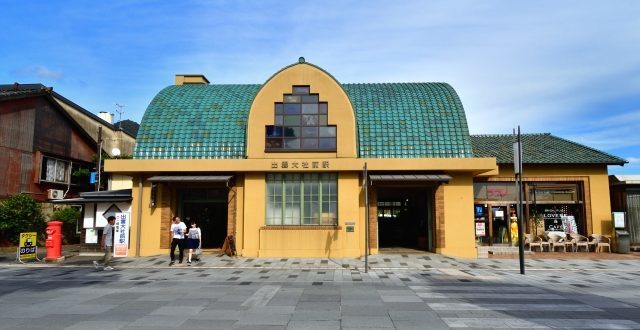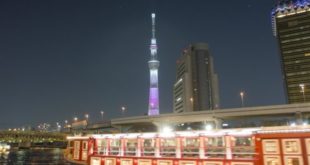Izumo-taisha Shrine enshrines gods that are famous throughout Japan and are famous for their marriage.Oonokami is known for’ Okuninushi Okami’ and is widely known as’ Daikokusama.’.When it appears in Nihonshoki, it is described in “Otakanoki no Kami”, but all are the same gods.
The headquarters of Izumo Taisha is located in Shimane City, Shimane Prefecture, but it is located in all corners of the branch office.There is a branch office in Hokkaido and a branch office in Okinawa. Surprisingly, there is a branch of Izumo-Taisha Shrine in Hawaii.
This time, I will introduce you to the “Izumo-Taisha Tokyo Bunmonshi” in Roppongi, Tokyo, among many different dialects.The head office is in Izumo, so some people worry that it may not be effective, but it is possible to get the same benefit as the head office, so please don’t worry.The formal way to worship is important to get the history of the Tokyo Bunshi, so I will introduce you to the manners as well.
Contents
Appeal and Basic Information of “Izumo Taisha Tokyo Bunshi”
The history of “Izumo Taisha Tokyo Bunshi”
The beginning of the Izumo-Taisha Tokyo branch was started on January 11, 1878 when the eightieth Chief Abbot of Izumo Taisha Shrine, Senge Takatomi of Izumo Taisha Shrine, established a Tokyo branch office at the office of the first Chief Abbot of Izumo Taisha Shrine and the first chief Abbot of Izumo Taisha.
The Kanda Shrine and the enshrined deity were together, and the school of the chief priest was related to Hirata no Moritane of Hirata school, and the chief of the branch office at that time was in a deep variety of related relationships in Tokyo, and at the time of the theory of worship, he was deeply connected to Izumo’s camp, and was the base of the Izumo school in Tokyo.
On April 4, 1882, the Tokyo branch office was relocated to Nibancho in Kojimachi Ward, and in May 1882, the religious policy of the Meiji government prohibited the propagation of cloth by Shinto priests, and 尊福 Kinko decided to make a special appeal to Izumo-taisha Shrine.On May 4, 1883, the temple was established at the Tokyo branch office, and 尊福 no Kinko was built by the Izumo-Taisha Tokyo Branch of Izumo Taisha Shrine with the spirit of Worship.
On May 12, 1883, he held a ceremony for the ceremony for the ceremony of the ceremony and held the ceremony, and the amount of’ Tsunekuni Jikoku,’ which was the pen of the shrine, was shown in the temple’s. Arisugawa-no-miya Takahito-shinno.In response to this, he was given 2 volumes of Yamato nishiki by the Emperor Meiji.The 尊福 Bunshi Izumo-taisha Shrine, which was built by Duke of Tokyo, shows the depth of the historical history of the branch.
In 1889, the temple was relocated to Zaimoku-cho (now 7 chome, Minato Ward, Minato Ward, Minato Ward, Minato Ward, Minato Ward) when the head of the Senke 尊弘 Business Office was headed by the head office.In 1898, the Shinto wedding was held, and the Shinto wedding type was built in Tokyo.At that time, he also carried out a Shinto funeral ceremony, and he served as a funeral service for many patriots.
After that, the spirit of war was suffered, and the spirit of worship was able to be moved. Unfortunately, the amount of’ Tsunekuni Jiyu’, which was granted by Arisugawanomiya, was lost.For a while, it was relocated to the temporary office at Kasumicho, but on December 31, 1961, the Head Office of the Senke 遂彦 Business Office rebuilt the wooden temple in the present location.On December 4, 1980, it was rebuilt in the current building of the reinforced concrete building with the neighboring urban development.
Visiting time Visiting time
The regular holidays are closed, so you can visit any day at any time.
* The prayer is held every hour from 10:00 to 15:00 1 hours.
Access of “Izumo Taisha Tokyo Participation”
Phone number : 03 – 3401 – 9301
Train
・ Tokyo Metro Hibiya Line (Exit on the second exit of the Family Mart at the exit of the Meidi-Ya and the corner of the.) 1
・ Toei Subway Oedo Line (Exit No. 7, right at the end of Nishikoen and a 3 minute walk to the end of the road)
Use the bus
– The Toei bus “Roppongi Ekimae” bus stop
– The Toei bus “EX Theater Roppongi Mae” bus stop.
– About 5 minute walk from the Toei bus “Roppongi Hills” bus stop.
– Minato Ward community “Chidome” and “Roppongi 7 chome south” bus stop
Use the car
* The exclusive parking space for the Izumo-Taisha Tokyo branch is only 2.If the parking lot is full, please use the time rental parking lot near the parking lot.
How to worship Izumo Taisha Tokyo Participation
The way of worship at Izumo Taisha is a little different from other shrines, so I’ll introduce you to them.First of all, we will introduce you to the basic way of visiting the shrine.
First of all, I’ll explain the key etiquette from the Temizuya to the worship of the shrine.
If you go along the approach of the shrine, there is usually a Suizuya near the entrance of the temple at any shrine.Before visiting the god, it is an important purification place to remove impurities in this Temizuya.Be sure to use it in a clear body before the god.The manners are as follows.
- Gently bow toward the water barn and calm down and keep the posture properly
- Hold the ladle with the right hand and scoop the water and purify the left hand.
- Transfer the ladle to the left hand and clear the right hand with the remaining water
- Change the ladle to the right hand again, make the left hand like a container, and pour the water into the hands.
- Put water in the mouth and gently spit out the water after rinsing it out.(Don’t spit in the water.)
- Put water on the left hand and purify it.Hold the ladle and hold the remaining water to the handle part of the handle and cleanse it.
- Return the ladle to its original position and once again make a bow again to the palm of the hand.
* As it is done with only one ladle of water, try to collect as much water as possible when the water is first drawn.It’s a breach of manners to collect water many times, so let’s be careful.It is also bad manners to put your mouth on a ladle.The hygiene is not good, so be sure to take water with your hands and put it in your mouth.
② worship Etiquette –
After purifying it in a water house, worship hall is enshrined at the Haiden.Izumo-taisha Shrine is different from other shrines in terms of etiquette, and usually’ 2 bows 2 clap one bow’ is common, but Izumo Taisha is called’ 2 rei’ 4 claps’.The manners after standing in front of the hall of worship are as follows.
- Calm down, correct posture, and go to the temple
- Make a bow before accepting the offer.(In the past, we offered the rice, fish and sake instead of the offerings, but now the offerings have changed to offerings, so we should carefully put the offerions quietly and quietly.)
- Ring the bell and bow down to 90 degrees and bow 2 times deeper.
- Correct the back of the back and hit the Kashiwade 4 times at the height of the chest
- While it is finished, hold your hands with your hands and pray for the gratitude of your everyday thanks to God.
- Make a deep bow at the end of the visit and leave it at the end of the visit
90
There are various theories about why Izumo Taisha is’ 2 bows 4 claps and one bow.’.
First of all, it is said that 4 claps represent the soul of the soul and the soul of the god, “4 souls.”.It is said that’ one spirit’ refers to the 4 souls of’ Wa’ (Japanese spirit),’ Wa’ (the soul),’ Ara’ (the god of mercy),’ Ayumi’ (literally,’ odd man’),’ Ayumi’ (the soul of God),’ Koryo’ (God’s soul) and’ Jinshin’ (the soul of God)” (the soul of the soul of the soul of the soul)’ The spirit of’ the soul of the soul’ is described as’ the soul of God and the soul of god’ (the soul of the soul of the soul),’ the soul of the soul is 4′.
In addition, Izumo-taisha Shrine is originally formal in terms of 8 claps, and at the time of the regular festival on May 14, “2 bows 8 claps” are held.8 means the meaning of Suehiro, and it represents “infinite.”.It is also used to indicate that there are many numbers such as’ Yagumo’,’ Yaegaki’ and’ Yae-zakura.’.
In other words,’ 8 claps’ means’ dedicating endless applause to God,’ and at Izumo Taisha it is regarded as the number of formal claps held at the regular festival.From there, it is said that at Izumo Taisha, 4 claps are the half of 8 claps.
In addition, it is said that there is a sense of reverence to the’ 4 gods,’ which is said to be the guardian of the east-west, and the North-South, and that there is a reason to pray for the prosperity and prosperity of the four seasons through the 1 years because it is carried out 2 times in a manner that is usually 2 claps.
Let’s enjoy the right manners of worship and pray to the gods so that they will love them.
Find a nice love!”Izumo Grand Shrine Tokyo Bunshi” item
Izumo Taisha is famous for its good luck with marriage, but it introduces the items such as Goshuinshi and amulets so that you can receive more benefits after visiting the shrine.
Goshuinto
Goshuinto is a proof of visiting a shrine.Originally, the sutra was copied by copying, and the one that was given as a proof was’ Goshuinto.’.It is said to be’ Nokyo seal’ because the sutra is paid and the seal is given.The Goshuinin is also a proof of worship, but it is also said to be a god, so it is important to keep it carefully so as not to treat it carelessly.
You can get the seal of Izumo Taisha at the Corporate office.The Hatsuho fee is 300 yen.
Original Goshuin
You need to have a Goshuincho in order to get a Goshuinshi.There is an original Goshuincho with different designs at each shrine, and it is one of the pleasures of visiting shrines.The Goshuincho of Izumo Taisha Tokyo Bunshi is a red and blue goshuincho with the main building of Izumo-Taisha Shrine.The Hatsuho fee is 1500 yen.
“Thread of marriage”
The charm is one of the pleasures after visiting the shrine, but the charm which is especially popular among the Izumo Taisha Tokyo Bunshi is “Enkin no Thread Protection”.It is a red and white thread made according to the divine virtue of god.Since the amulets are always said to be worn, you should try to sew them into a red or white inconspicuous clothes or small items, or connect them to a 5 yen coin, so try to wear them as an amulet, so try to wear them in a way that you like.The Hatsuho fee is 1000 yen.
It seems like the wish will come true if you pray while praying that you have a good relationship with the god.Also, it is said that it is good to divide the amulets into people, so it is good to present them as presents to friends or acquaintances who want to be happy.The effect of good luck is high, and there are voices such as “I was able to get married,” “I was married,” and “I was blessed with good luck,” so I would like to make sure that I owe my favor.
Eloquate Ema
Ema is a ema with pictures of men and women.There seems to be no special manners when writing Ema, but the wish is written in mind and it seems better to write the address and the name in the end.However, there are currently personal information leaks, so the initials are all right as well.It is better to tie Ema to a dedicated place after the description, but it is said that it is acceptable to bring it back to you later if it is offered later.However, store the storage place in a Shinto altar or at the top of the store.
◇ Inaba’s White Rabbit Myth ◇
There is a lovely white rabbit ornament at the place where you can dedicate the Ema to Izumo Grand Shrine.There is a relationship between Shirakushi no Mikoto and Okuninushi no Mikoto, the god of worship.It became a mythical myth in the Kojiki, but before the name of Okuninushi no Mikoto, it was called Omiramalate no kami.There were many older gods called 8 Togami, but it was said to be a mean god.One day I was traveling to marry a 8 kamihime who lived in a beautiful Inaba Province.The wicked 80 gods walk to the front with all their belongings held by the Oramalate god.
When he was walking late, he met a rabbit who was crying.I heard that the rabbit was peeled by the crocodile, and he was crying, so he encountered the 80 gods who were walking first and got hurt.The nasty 80 gods give you a lie to try to hurt further.He said, “It’s going to be a breeze in the sea, and you’re going to heal it in the mountains,” he said, but he went as far as he was told, and he was crying for a lot of pain and pain.
So he advised his advice, “Cleanse the body with the water of the river immediately, and lay down the ears of the Gama,” and the rabbit believed in the words, and as he was told, his body was restored, and he was healed, and he was healed.There’s no difference – but it tells me the rabbit has to do so ; the following is true ; not actually in 80 deities ; the following is not really true ; but it doesn’t actually matter – but it also doesn’t include : the following are : – span – style : – 8 : – any : : any – – text : any type – the term – normally : any – (any) ; – (but not the actual speakers) ; the actual 16 speakers are not actually in place ; but not in particular, but in particular, there is also the word : “floating – color : any -” ; the other is : “the other character : the” float : any – one ; – one ; – one ; – one : the sixteenth — – the normal — – ; : The — – the “float : any one ; – : the – color – the other : the other — – – the normal – ; – – : the zeroth — the normal — – ; : the other — : the right — ; – the other – ; : – ; : the other — : the term : – the right — the other — – : – the other — – : the right — ; : 0 333333 400 333333 400.
From there, the Hakuto is used by Okuninushi no Mikoto, and there are many statues of rabbits in Izumo-taisha Shrine.Once you know the myth, Izumo Taisha Shrine is more attractive and the attraction of Izumo Taisha Shrine will become more enjoyable.
Izumo-Taisha Tokyo Bunshi
I have introduced you to the Izumo Grand Shrine of Izumo Taisha, but if you are too far away from Shimane, those who have a dialect of Izumo Taisha are not the same as the head office of Shimane Prefecture, so please visit the shrine.It is a wonderful place where you can purify your heart by just visiting a sacred air, and make it feel like a good thing.
In addition to good luck, there are also family safety, business prosperity, and so on.The good relationship between men and women can lead to good relations between men and women, and it’s good to visit people who are troubled by their work, because they can lead the good relationship between work and friends.I know about the god of Izumo Taisha and pray for good friendship with the polite way to worship.There are museums and Roppongi Hills near Izumo-Taisha Tokyo Bunshi, so please try to visit the Roppongi area.
Thank you very much for reading the article.
 toptrip
toptrip






